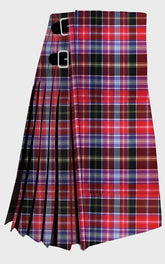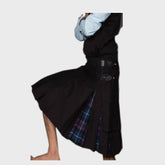Bombard Chanter
- 10
- 15
- 20
- 25
- 30
- 50
- Featured
- Best selling
- Alphabetically, A-Z
- Alphabetically, Z-A
- Price, low to high
- Price, high to low
- Date, old to new
- Date, new to old
Sort by:
- Featured
- Best selling
- Alphabetically, A-Z
- Alphabetically, Z-A
- Price, low to high
- Price, high to low
- Date, old to new
- Date, new to old
-
Rosewood Bombard Chanter
Material: Genuine Rosewood Finish: Natural Grain Bell: 3" Diameter Key: Brass Nickle Pleated Sole: Imitation Ivory Style: Musical Instrument Type: Bombard Chanter Cane Reeds: 2 Set- $79.99
- $79.99
- Unit price
- / per
Bombard Chanter: A Unique Instrument for Traditional Music
The Bombard chanter is a distinct and essential part of traditional woodwind instruments, particularly associated with Celtic and French music. Known for its rich, deep sound and historical roots, this instrument is often used in folk music and celebrations. The Bombard chanter is primarily recognized for its use in accompanying the Bombard, a type of double-reed wind instrument, and has become a crucial element of musical ensembles performing traditional tunes.
What is a Bombard Chanter?
A Bombard chanter is a woodwind instrument used in Celtic and French folk music. It is part of the Bombard family, which includes a variety of wind instruments traditionally made from wood or reed. The chanter itself is similar to a bagpipe chanter in that it functions as the melody-producing part of the instrument. The Bombard chanter is typically used with a double reed, which creates its distinctive, loud, and somewhat piercing sound.
This instrument is commonly found in regions like Brittany, France, where it is a traditional staple, as well as in other parts of Europe, especially in places with rich Celtic heritage. It is particularly associated with Celtic bagpipes and other wind instruments used in folk music.
History of the Bombard Chanter
The Bombard chanter has a deep historical connection to Celtic and European folk traditions. It was originally used in military and ceremonial music and, over time, became more integrated into the broader cultural and folk music scenes. The Bombard itself is believed to have evolved from earlier medieval wind instruments, including the shawm, a predecessor to the modern oboe.
During the 18th and 19th centuries, the Bombard gained prominence in the regions of Brittany and other Celtic-speaking areas, where it became a common feature in traditional ensembles. Over time, the Bombard chanter evolved into the modern form we know today, with small adjustments to its shape and construction to enhance its sound quality and tuning.
Characteristics of a Bombard Chanter
-
Construction:
- Bombard chanters are typically made from wood, though some modern versions may feature plastic components for durability and ease of maintenance.
- The chanter has a cylindrical or slightly conical shape, with finger holes along its length to produce different pitches.
- A double reed is attached to the top of the chanter, which creates the distinctive sound when blown into.
-
Sound:
- The sound produced by a Bombard chanter is loud and bright, with a somewhat piercing quality that cuts through the sound of other instruments in an ensemble.
- The tone is often described as sharp and brash, which adds energy and emphasis to the music.
- The volume and projection of the sound make the Bombard chanter well-suited for outdoor performances and festivals.
-
Range:
- The Bombard chanter typically has a limited range compared to other wind instruments, producing a range of notes similar to the lower registers of a bagpipe chanter.
- Some Bombard chanters are tuned in a specific key, while others may be adjusted to match the key of the accompanying instruments in an ensemble.
-
Size and Shape:
- Bombard chanters can vary in size, though they are generally larger than many other woodwind instruments.
- They can be crafted with intricate details, often including ornamental carvings or designs on the wood.
How to Play the Bombard Chanter
Playing the Bombard chanter requires skill and practice, particularly in mastering the use of the double reed. The reed is critical for producing the instrument's characteristic sound, and it must be properly shaped and maintained for optimal performance.
-
Breathing Technique:
- Like other reed instruments, the player must control their breath to create the right sound. Since the Bombard chanter is loud, it is important to regulate airflow to avoid distortion or overly harsh sounds.
-
Fingering:
- The player must use the fingers to cover the holes along the length of the chanter, adjusting the pitch as they play. This requires finger dexterity and coordination, as different fingerings correspond to different notes.
-
Double Reed Maintenance:
- The double reed used in the Bombard chanter must be carefully maintained and replaced as it wears out. Proper reed maintenance is crucial for achieving the desired sound quality and projection.
Bombard Chanter in Traditional Music
The Bombard chanter is primarily used in folk and traditional music settings, often in combination with other instruments like the bagpipes, fiddles, and drums. In regions like Brittany and other parts of France, it plays a central role in local music traditions, particularly during festivals and celebrations.
-
Celtic Music:
- The Bombard chanter is closely associated with Celtic music traditions. It often plays the melody in ensemble settings, with other instruments providing accompaniment.
- The sound of the Bombard chanter is designed to be bold and stand out in the context of other instruments, making it an ideal choice for outdoor performances or events where the music needs to carry over long distances.
-
Festivals and Celebrations:
- The Bombard chanter is commonly featured in festivals like the Breton music festivals, where traditional instruments are celebrated. It is used to provide high-energy melodies that get people moving and dancing.
-
Military and Ceremonial Music:
- Historically, the Bombard chanter was used in military and ceremonial settings, often accompanying soldiers or marching bands. The loud, commanding sound of the Bombard chanter made it ideal for these types of occasions.
Bombard Chanter vs. Other Woodwind Instruments
While the Bombard chanter is similar to other woodwind instruments, it has some key differences that set it apart.
-
Compared to the Bagpipe Chanter:
- The Bombard chanter is often compared to the chanter of a bagpipe, as both use double reeds and are capable of producing similar loud, projected sounds. However, the Bombard chanter tends to be a little sharper and brighter in tone compared to a traditional bagpipe chanter.
-
Compared to the Shawm:
- The Bombard chanter shares historical roots with the shawm, an older double-reed instrument. However, the Bombard chanter is generally more compact and has evolved into a more refined version of the shawm’s design.
-
Compared to the Oboe:
- While the oboe also uses a double reed, the Bombard chanter produces a more robust and less refined sound. The Bombard is designed for folk and outdoor performance, while the oboe is often used in orchestral settings.
Conclusion
The Bombard chanter is a unique and powerful instrument that plays an integral role in traditional Celtic and French music. With its bold sound, intricate craftsmanship, and historical significance, it remains a beloved instrument in folk music ensembles. Whether used in festivals, ceremonies, or folk performances, the Bombard chanter adds depth, energy, and a sense of tradition to any musical event.








